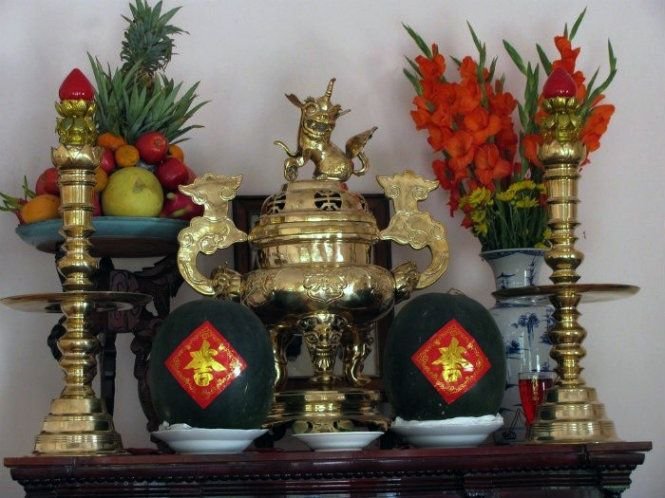Ever since the early stage of hunting and gathering culture, pigs appeared in our nature as a primary source of food. Over time, humans have domesticated this species which was considered quite “aggressive" in the wild, making it one of the most important domestic animals in human life. Because of its attachment to humans since ancient times, the pig holds an important position in Asian culture in general and in Vietnamese culture in particular, being one of the "Lục súc" (6 cattles raised near the house) and is the last in the "12 Zodiacs".
THE PIG IN VIETNAMESE LIFE AND CUISINE
Pig is a close and familiar animal to the Vietnamese people, so we call it by many names, for example: “heo, lợn, ỉn, hợi, trư”. As mentioned, humans have tamed wild boars into domestic pigs, and from the domestic pig breed, we have created various traditional Vietnamese dishes, including:
Beef and pork vermicelli - Hue specialties - Source: pasgo.vn
Lean pork paste (a Vietnamese specialty which was meticulously described by Nguyen Tuan)
The filling for cakes such as: bánh giò, bánh chưng, bánh cuốn (special dishes of Vietnamese Tet holiday)
Beef and pork vermicelli (a specialty of Hue)
Braised pork belly is an indispensable dish in the New Year of the Saigonese and other Southern people.
Vietnam has more than 20 pig breeds, including the Nghe An’s wild pig breed with a special farming method which is free-range and fed with wild vegetables, bananas, potatoes, cassava...
Not only the flesh, other parts of the pig are also used thoroughly. For example, pig skin can be dried to make “bóng bì” for savoury or sweet soup. The offal of the pig is also used as food (lòng lợn), especially “cháo lòng” (porridge with pig’s offal). In the Northwest, Central Highlands, and Viet Bac, fangs of wild pigs are processed into jewelries (usually necklaces) and sometimes even have spiritual values (such as for exorcism).
THE PIG IN VIETNAMESE TRADITIONAL RITUALS, CUSTOMS, FOLK SONGS AND PROVERBS
Pig procession festival in La Phu village. Source: dangcongsan.vn
Because of its very early appearance and important role in Vietnamese life, pigs appeared in ancient rituals and were honored as "Ông Ỷ" in the festival of the Village's Tutelary God. Before that, there was a series of complicated procedures such as selecting “Ông Ỷ” among the strongest and biggest pigs, then cleaning and feeding them thoroughly. The person raising "Ông Ỷ" must be a person of virtue and talent who has both a son and a daughter.
In the festival, “Ông Ỷ” is decorated beautifully and carried in a palanquin to the communal house. Pigs eat and sleep very well and also breed a lot, which can relate to the cultural belief of “Fertility rites". By this ritual, people pray for a favorable harvest and a prosperous year.
Pork is an indispensable ingredient in the food trays of weddings, funerals, and memorial days. Pig is also mentioned regularly in many folk songs, proverbs and is a part of "folk poetry" which is always preserved and kept as treasure. From proverbs such as: "Don’t judge a book by its cover/ A fat pig means delicious offal.", "The chicken clucked, pecked on a lime leaf/ The pig goes, oink, oink, buy me an onion."; or idioms: "It is better to leave well alone”, "A wedding pig and a new shirt" to the catchphrases in daily communication: "Eat like a pig", "Dirty like a pig", it shows the influence of this animal in the life of Vietnamese people in all aspects.
THE PIG IN PAINTINGS AND SCULPTURES
In caves with traces of prehistoric people, people found images of wild boar carved vividly on the cliffs. Pig was one of the "raw materials" for artistic creation, especially in folk art of painting and sculpture.
Pigs in Dong Ho painting. Source: Vnexpress.vn
Dong Ho painting series were among the most famous art pieces. Because of distinctive and outstanding features of their images and colors, the pig has since become so lively.
The sentence implies image of a well-fed pig, expressing the wish for a full and prosperous year in Tet paintings such as "Lợn ăn lá ráy", "Đàn lợn"; combined with "traditional colors" - bright and brilliant colors made from traditional ingredients creating a series of art paintings with enduring vitality.
Besides, we can easily see the image of the pig in the art of pottery and sculpture. Every child once has a lovely "piggy bank", with different sizes, empty inside with a small groove carved on its back which is used to keep saving money. Pig is also the inspiration for folk artists to mold "tò he" (a toy of Vietnamese children), in the famous and beautiful set of "12 zodiac animals".
The pig keeps coming into life and plays an important part not only in daily life but also in the spiritual life, culture and folk art of the Vietnamese people. The pig is also the main inspiration for artists of Sun Wolf when creating the character "Nghệ Trư An/ Uncle Pig Chef" in the animated short “LINH: Magic Powder". Let’s watch the animation and get to know Uncle Pig Chef of Linh World!
THE PIG IN ANIMATION “LINH: MAGIC POWDER”
In “LINH”, Uncle Pig Chef is introduced right at the beginning of the film. This character is a famous chef with exceptional cooking skills. To him, every meal is like a battle because he puts all his mind and energy into cooking the best dishes.
Uncle Pig Chef is a strong and persistent person. After pursuing culinary quintessence throughout Linh World, he finally found the happiness of his life. He returned to his hometown and opened a restaurant serving the one-of-a-kind dish - Pig Chef’s Fish Noodles.
Yên Tâm
Check out other articles here:
-
2022
- Jul 7, 2022 VIETNAMESE CULTURE: THE PIG IN OUR CULTURE
- Jul 7, 2022 SUN WOLF ANIMATION STUDIO OPENING EVENT
- Jul 7, 2022 VIETNAMESE CUISINE IN ANIMATION “LINH”
- Jun 13, 2022 ANIMATION JOURNAL: LINH WORLD’S ECO SYSTEM
- Jan 20, 2022 Animation journal: “Nghê" - The Vietnamese Guardian Animal
- Jan 18, 2022 Animation journal: hoi an
- Jan 14, 2022 Animation journal: vietnamese fish vermicelli soup
- Jan 1, 2022 Animation journal: vietnamese spiritual life
-
2021
- Oct 20, 2021 Animation journal: Colour Script
- May 30, 2021 Animation journal: Gạo’s house
- Mar 12, 2021 Animation journal: script & Storyboard

















































